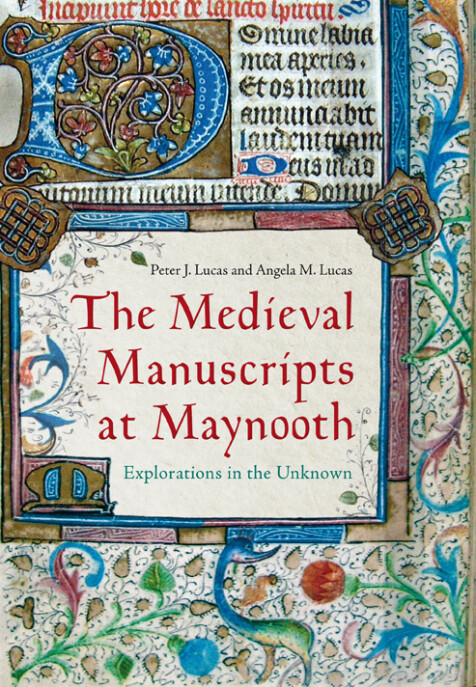The medieval manuscripts at Maynooth
Explorations in the unknown
Peter J. Lucas & Angela M. Lucas
‘Although Maynooth’s important collection of Irish language manuscripts is well known thanks to the publications of Paul Walsh and Pádraig Ó Riannachta, its uncatalogued collection of medieval Latin manuscripts was virtually unknown. Now, through the labours of this gifted husband-and-wife team, comprehensive descriptions of all the Latin manuscripts in the college are made available to scholars worldwide … because the authors clearly explain their modus operandi at the beginning of the book, the form of each entry is readily understood. Seventy-five high quality digital photographs illustrate the text … the meticulous scholarship of Peter and Angela Lucas makes this book a model of its kind’, Timothy O'Neill, Journal of the RSAI (2014–2015).
‘The Lucases have expanded considerable energy on researching the origins and history of the manuscripts … Their descriptions of all the manuscripts are expansive, supplying details of contents, origins, date and localization of script, provenance and history. The information on binding, in some cases furnishing important clues about provenance, is especially full … The exhaustive manuscript descriptions in the catalogue, together with the many splendid illustrations of scribal hands, illustration and illumination, and bindings, give an excellent account of the interest of this small cache of medieval books’, Julia Boffey, TLS (June 2015).
‘This catalogue of the medieval manuscripts at Maynooth University describes sixteen mainly Latin manuscripts (and a further twenty-two single-leaf items and fragments) ranging in date from a record of conciliar events in the dioceses of Reims writing in AD 991 to an illuminated missal of 1529 … the authors have unearthed an impressive amount of information on the biographies of each work and the collection as a whole’, Salon: the newsletter of the Society of Antiquaries of London (February 2015).
‘Maynooth’s medieval manuscripts, which have lain largely unknown to scholars for two centuries, are here collected and presented to the public in an informative and attractive way … Sixteen medieval manuscripts are examined, ranging chronologically from the eleventh to the sixteenth century … Full colour illustrations are used throughout, and the combination of text and image makes it possible to get a good sense of the manuscripts in question … This is a book for those interested in medieval books: how they were constructed, and how they were transmitted from place to place’, Michael Staunton, Studia Hibernica (2015).
'The authors are to be commended for the forensic work that has gone into this book. The introduction states that a 'love of detection work is an essential qualification for cataloguing medieval manuscripts'. This love is apparent on each page and it is an indispensable addition to medieval studies that will undoubtedly attract many scholars to Maynooth to examine the medieval manuscripts stored there.' Áine Foley, Forum for Medieval and Renaissance Studies in Ireland, (2017-2018).

